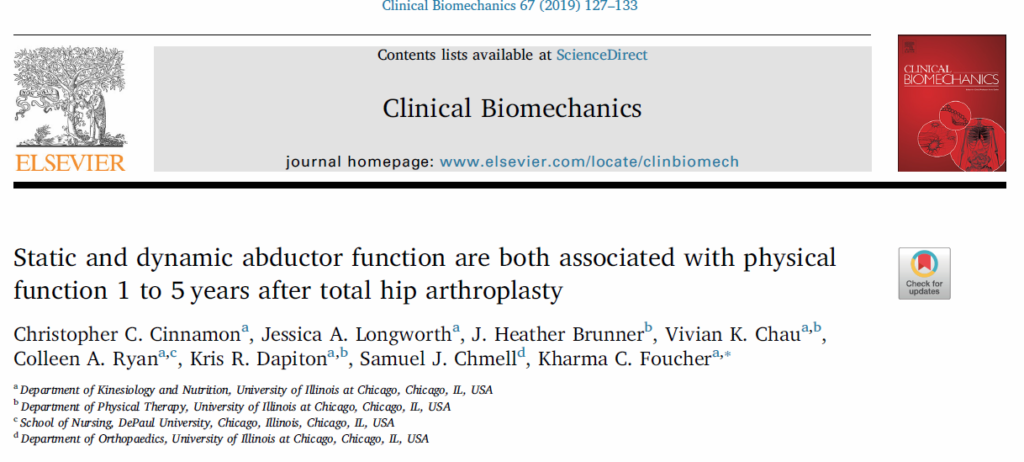Greetings!
For you science fans out there, I wanted to share my article just published in the peer-reviewed journal Clinical Biomechanics:
Quick Background. Most of you know that as part of my transition from practicing lawyer to full time Tai Chi instructor, I returned to school. That culminated in earning a Masters in Science in Kinesiology/Exercise Physiology from the University of Illinois at Chicago. Part of that experience included working as a Graduate Research Assistant in the Biomechanics Laboratory under the awesome Kharma Foucher, MD, PhD.
The article is based on a study of total hip replacement patients I ran while working in the UIC Biomechanics Lab under Dr. Foucher.
The Study. Our research examined possible reasons why a subset of total hip replacement patients have less successful outcomes. We focused on a group of muscles called the “hip abductors.” These muscles, located in the back of the pelvis and outside of the leg, perform key functions for mobility, including stabilizing the pelvis while walking.
Our hypothesis was: The functioning of hip abductors was related to the ability of total hip replacement patients to perform common physical functions more than 1 year after surgery.
The Methods section of article describes the multiple ways we tested our subject’s hip abductor function and the physical function tests they performed.
The Results. The results supported our hypothesis. The better a person’s hip abductor’s functioned, the better that person scored on physical function tests.
What does this mean? In the short run, our research provides a basis for further research to examine if a causal connection exists between hip abductor function and physical function. In the long run, if that causal connection is established, then, for those total hip replacement patients who do not return to full physical function after surgery, hip abductor strengthening programs might help them improve physical function. Improving physical function can ultimately help these patients experience a better quality of life after surgery.
That’s important!
Here’s a link to the article:
What does this have to do with Chicago Tai Chi?
Tai Chi was not part of this study. But, for me, working in the Biomechanics Lab, studying human movement, and participating in the process of science, were all important in how I approach thinking about and teaching Tai Chi.
In short, science is important. It represents a process for advancing human knowledge.
That said, the process of science can be flawed. Poor study design, manipulation of results, flawed analysis can all lead to conclusions that are not supported by evidence. It happens. A lot.
Tai Chi is the most researched of the “mind body” exercises. Strong evidence supports that Tai Chi is effective for improving balance, reducing falls, improving arthritis, and more. Many of the Tai Chi studies are well designed and conducted. Some, less so.
Critical reading is important when assessing claims from research.
Other claims for Tai Chi and Qigong find less support in science. That does not mean those claims are invalid. It just means they are not supported by Western medical research at this time.
For me, those are important distinctions on which to be clear.
In summary, my time in the Biomechanics Lab provided an important foundation for how I understand and communicate the powerful benefits of Tai Chi and Qigong.
There you go! Enjoy the article, science fans!
Sincerely,
Chris Cinnamon, JD, MS
Head Instructor
ACSM Certified Exercise Physiologist
chris@chicagotaichi.org
visit our website www.chicagotaichi.org
